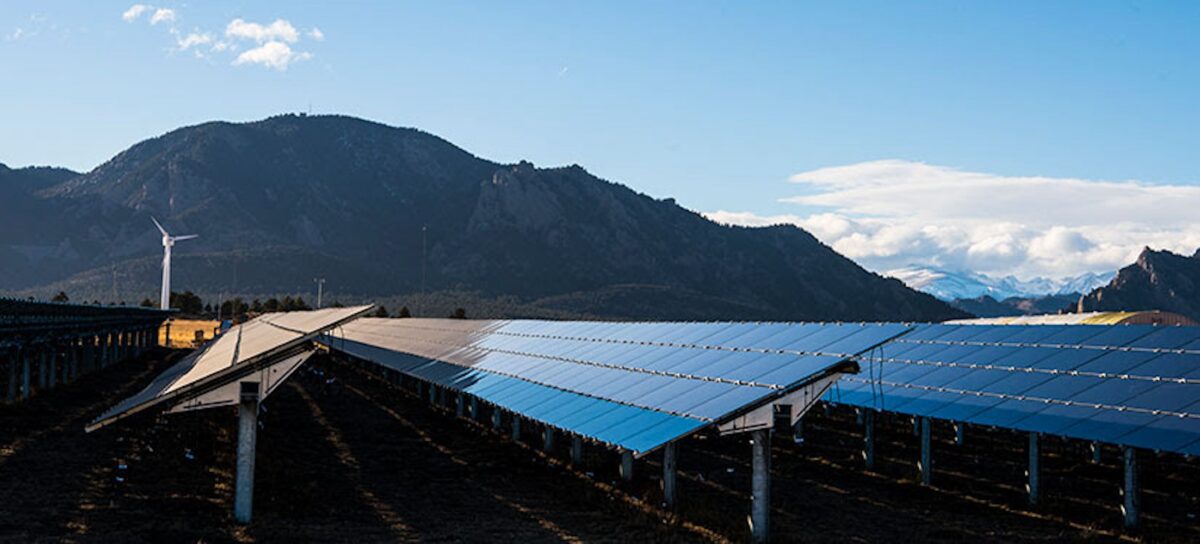To honor the continuation of the Cadmium Telluride Accelerator Consortium (CTAC), The National Renewable Energy Laboratory will award $1.8 million in contracts to help fund seven projects. Each initiative is working toward developing technologies, chemistries or domestic resource extraction practices, that can help lower the cost and increase the efficiency of thin-film solar cells made from cadmium telluride (CdTe) or cadmium-selenide-telluride (CdSeTe) chemistries.
The CTAC was first announced in August 2022 and will run for three years. NREL released its most recent small projects proposal notice request in June of this year, with the second round of awardees announced earlier this month. The four topic areas include high-efficiency devices; tellurium supply; new device configurations and processes; and characterization, modeling and simulation.
The projects include:
- Arizona State University: Vapor-Assisted group V diffusion doping control in high-efficiency CdSeTe solar cells. This project aims to explore how to achieve 26% cell energy efficiency (up from 22.3%) while reducing current domestic CdTe module costs by half to ¢0.15/w by 2030. It will research how vapor-based ex-situ group V doping, diffusion doping activation strategies, surface cleaning techniques, passivated back contact methods, and innovative device architectures can increase CdTe cell energy efficiency.
- Washington State University: Optimizing Iodine-Doped CdTe for Potential n-Type Solar Cells. The researchers will develop CdTe homojunctions using iodine doped n-type CdTe absorbers that are shown to have high carrier concentration and minority carrier lifetime with 100% dopant activation. The team will apply a combination of defect spectroscopy techniques, optimize surface passivation techniques, and device architecture, and aim to overcome present performance limitations based on p-type absorbers.
- nexTC Corporation: Solution-Processed Buffer Layers for CdTe Solar Modules
This work will use nexTC precursors to generate state-of-the-art buffer films that improve device performance. In this project, the team will demonstrate the efficacy of solution processing to yield high-quality front-interface buffer/emitter layer films used in the CdTe market. The aim is to accelerate the transition from ideation to high-volume - University of Nevada, Reno: Identifying high potential areas of tellurium extraction within existing base and precious metal supply chains. This project is geared toward designing a sustainable, domestic tellurium extraction and supply chain. Because tellurium production is usually a byproduct of lead and copper mining in the Western U.S., researchers will assess how to leverage existing mines further to produce tellurium. According to USGS, as tellurium demand increases steadily over the next 15 to 20 years to meet renewable energy infrastructure demands, the current extraction volume will need to increase by 30 to 40%.
- Arizona State University: Thin High-Efficiency CdTe/MgCdTe Double-Heterostructure Solar Cells With Light-Trapping Features. This program aims to develop a model system to demonstrate ultra-thin monocrystal CdTe solar cells with an efficiency potentially reaching 28% and to better understand the challenges that polycrystalline CdTe thin-film solar cells face. The impact of this model system is beyond the demonstration of solar cells with high efficiencies; it also helps the CdTe solar cell community to address several critical issues, such as the optimization of both contacts and associated interfaces, the optimal passivation of the grain boundaries, and the development of ultra-thin absorbers integrated with light trapping features.
- Iowa State University: Innovative high voltage CdSe solar cells. Researchers in this project will explore how tandem-junction solar cells made from CdSe chemistry will perform as the lower gap cells with those made from CdSeTe chemistry. NREL states that tandem-junction solar cells have a higher module efficiency than single-junction models because they can split the sun’s spectrum into several bands converted into energy by multiple devices. Using this combination of materials to create a tandem-junction solar cell decreases the cost of vacuum deposition techniques that eventually help to trigger the sunlight absorption of a cell.
- University of Illinois, Chicago: Toward automated atomic-resolution scanning transmission electron microscopy and machine learning, for achieving high-efficiency CdSeTe solar-cell devices. The team will innovate new approaches to material characterization and chemistry modeling to help accelerate the energy efficiency of solar cells past 23%. They will employ various tools, including machine learning and electron microscopy, to study how grain boundaries, hetero-interfaces and defects impact the carrier lifetime and durability of CdSeTe solar cell materials.
This content is protected by copyright and may not be reused. If you want to cooperate with us and would like to reuse some of our content, please contact: editors@pv-magazine.com.








By submitting this form you agree to pv magazine using your data for the purposes of publishing your comment.
Your personal data will only be disclosed or otherwise transmitted to third parties for the purposes of spam filtering or if this is necessary for technical maintenance of the website. Any other transfer to third parties will not take place unless this is justified on the basis of applicable data protection regulations or if pv magazine is legally obliged to do so.
You may revoke this consent at any time with effect for the future, in which case your personal data will be deleted immediately. Otherwise, your data will be deleted if pv magazine has processed your request or the purpose of data storage is fulfilled.
Further information on data privacy can be found in our Data Protection Policy.